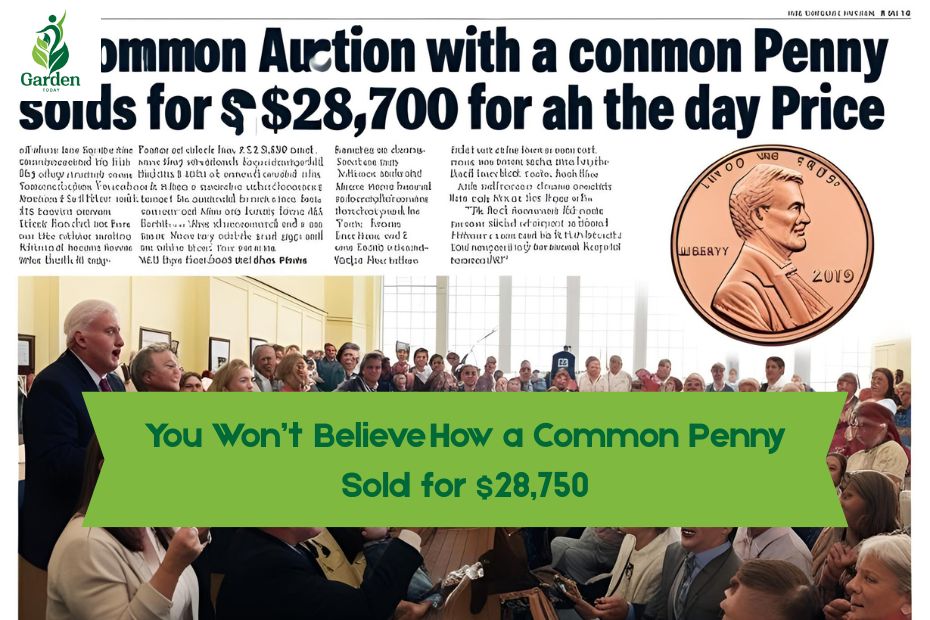Common Penny: Have you ever picked up a penny off the ground and thought it was just spare change? Well, what if that small coin could be worth thousands of dollars? It actually happened to someone! This article tells the amazing story of the $28,750 mule penny, how it was made, why it’s so valuable, and how you might find one too. Let’s dive into how a simple coin turned into a small fortune.
What Is a Mule Penny?
Common Penny: A mule penny is a coin that was made by mistake. Usually, the front and back of a coin match and are from the same year and design. But a mule penny is different—it has two sides that were not meant to be together.
In this case, the mule penny was made when the front of a 1999 penny was accidentally combined with the back of a dime (the coin that’s worth 10 cents). This kind of mix-up doesn’t happen often, so it’s super rare—and collectors love rare things!
How Was the Mule Penny Discovered?
This rare penny was discovered by someone in the U.S. who had no idea it was special at first. It looked a bit strange, so they took it to a coin expert. That expert quickly realized this was a mule error coin, and not just any error—it was a very rare one.
Coin collectors love error coins like this. When this penny went up for auction, it sold for $28,750! That’s a huge amount for something that could’ve been tossed in a jar with other loose coins.
Why Is the Mule Penny Worth So Much?
Common Penny: The reason this penny is worth so much is simple: rarity and mistake. When coins are made at the U.S. Mint (the place where coins are produced), machines stamp the front and back of each coin. Sometimes, very rarely, the wrong pieces get matched up. This creates a mule error.
There are only a few of these mule pennies known to exist. Because there are so few, and because it’s a clear mistake, collectors are willing to pay a lot of money to own one.
What Makes This Penny Different?
Here’s what’s strange about the mule penny:
- The front looks like a regular 1999 Lincoln penny.
- The back is not a penny at all—it’s the back of a Roosevelt dime.
- It’s made of penny metal (copper-plated zinc), but has dime features.
- It’s the same size as a penny, but has dime details.
This kind of mix-up doesn’t happen often. It’s believed this happened when a dime die (the tool used to stamp the back of coins) was accidentally used with a penny blank.
How Rare Are Error Coins?
Error coins like this are very rare. They don’t get made often, and when they do, many are caught before they leave the mint. But sometimes, one slips through the cracks and ends up in someone’s pocket.
There are other kinds of error coins too, such as:
- Double-stamped coins
- Off-center coins
- Coins with missing parts
Each type of error can make a coin worth more than its face value—sometimes a lot more.
Can You Find One Too?
Yes, you can! Start by looking carefully at your spare change. Keep an eye out for coins that look:
- Strange in size or color
- Have weird markings
- Are dated differently on each side
- Look like two different coins in one
You don’t need special tools to start—just good eyes and curiosity.
If you find something odd, take it to a coin dealer or collector. It might be worth something big!
Where to Sell Valuable Coins
If you think you have a rare or error coin, here are places you can take it:
- Local coin shops
- Online auctions like eBay
- Coin shows in your area
- Professional coin grading services for expert opinions
Don’t clean the coin—it could lower its value. Let experts see it in its natural condition.
Why Coin Collectors Love Errors
Coin collectors, also called numismatists, love finding coins that are different from the rest. Error coins are exciting because they tell a story. They are like a tiny mistake frozen in time.
The mule penny is one of the most famous examples of how a small mistake can lead to big value. It’s not just a coin—it’s a piece of history.
Conclusion
Finding treasure doesn’t always mean digging for gold. Sometimes, it can be as simple as checking your pocket change. The $28,750 mule penny shows how one small error can create something collectors dream about. So next time you get a penny back at the store, take a closer look. You might be holding a fortune in your hand!
Visit Garden Today
